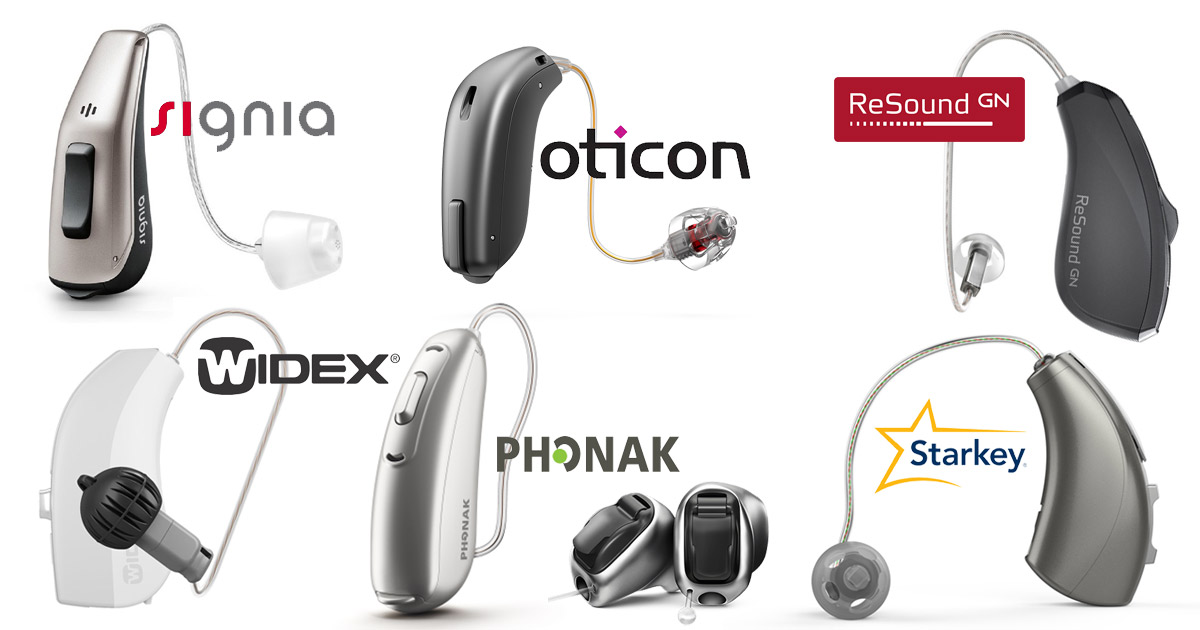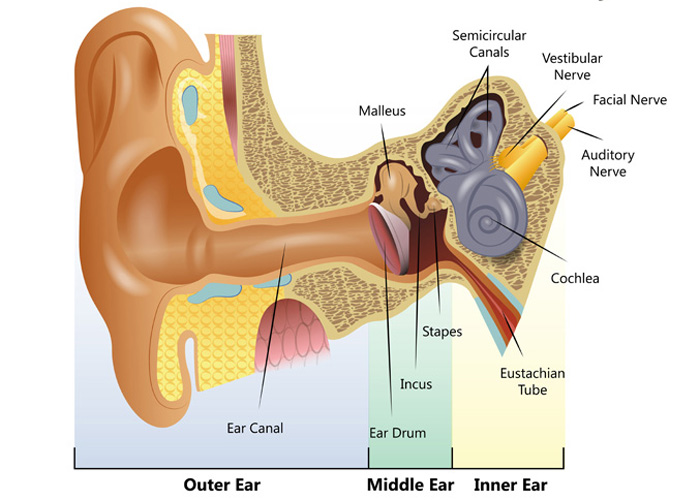Understanding Hearing Aids And Tinnitus
Understanding Hearing Aids And Tinnitus
Tinnitus is the rigging, buzzing, or any other perception of sound in the ears. While tinnitus and hearing loss are different, they often go together. Studies show that 10% of the people who lose their hearing experience tinnitus in their lives.
There is no cure for tinnitus, but you can increase your hearing using hearing aids. Due to the many hearing aids in the market, it can be hard to pick the best hearing aids for tinnitus and hearing loss.

Since tinnitus and hearing loss exist simultaneously, most of the hearing aid manufacturers equip their products with the ability to rectify tinnitus.
How hearing aids provide tinnitus relief
There are many ways in which hearing aids help in fixing the tinnitus issue you are having. The obvious way is by amplifying the background noise which reduces your awareness of tinnitus. As a result of this, your brain focuses on the sounds you want to hear, instead of the sounds of tinnitus.
Hearing aids will also prevent tinnitus from interfering with your ability to participate in conversations and other social situations. They work by gently amplifying the sounds that are directed at you.
This helps you to focus on the sounds of someone’s voice, television, or any other thing that you are trying to listen, instead of concentrating on the tinnitus symptoms.
When the sounds you are focusing on are louder than the tinnitus symptoms, the tinnitus won’t interrupt you.
The cool thing is that most of the modern hearing aids come with a technological feature designed to work with a person’s tinnitus. The hearing aids play white noise or artificial sounds directly into your ear. This decreases the signal-to-noise ratio of the annoying tinnitus sound.
This form of tinnitus therapy has been shown to retrain the brain to “turn down” the volume of the tinnitus symptoms when you are going on with your life.
There are other hearing aids that connect to smartphones. These play sounds that encourage a sound-enriched environment through special apps.
In addition to using hearing aids, it’s also recommended that you use other tinnitus management systems such as counseling, education programs, and support groups.
Types of hearing aids

When you are looking to buy hearing aids, you should know that there plenty of these units in the market that you can go for. The most common ones being:
Behind the ear hearing aids
These rest behind the ear, sending sounds into the ear in different ways. One of the ways is through a piece of clear, flexible tubing that is connected to an earmould that fits inside the ear.
The other way is through a very thin, clear tubing that is connected to a small, soft tip that sits inside the ear canal. This fitting is known as the open ear fitting. Since the fitting blocks the ear less than the earmould, it provides you with a more natural sound that is less noticeable.
You should note that this fitting is effective when your hearing loss is mild or moderate. If you frequently suffer from ear infections, these pieces won’t be ideal for you.
The other way the units send sound to your ears is through a wire which runs from the hearing aid to a tiny loudspeaker held in the ear by a soft tip. Just like the open ear fittings, the pieces aren’t going to be ideal for you if you find fiddly tasks awkward or you frequently suffer from ear infections.
In the ear and in the canal hearing aids
They are identified by having their working parts in the earmould; therefore, the entire aid fits into your ear. The pieces come in different sizes and strengths. It’s up to you to choose the one that is ideal for your application.
You should note that the pieces won’t be ideal for you when you are suffering from severe hearing loss, you have extremely small ear canals, or suffer from frequent ear infections. The units also won’t be ideal for you if you are having problems using small controls.
Invisible-in-the-canal hearing aids
These are one of the latest pieces in the market. When you are wearing them, you fit them deeply in the ear canal. Since they are often very comfortable to wear, you can have them in your ears for months at a time and only remove them for cleaning.
They come in different sizes and strengths. Before you buy the pieces, take your time to talk to an audiologist who will help you in deciding the ones that are ideal for you depending on your hearing loss, size of your canals, your lifestyle, and budget.
Completely-in-the-canal hearing aids
They fit further into the ear canal. In most cases, they are invisible unless someone looks closely to your ear. They are often very tiny; therefore, ideal for you if you don’t like having large items in your ear.
Tips to consider when buying hearing aids
Due to the many choices of hearing aids in the market to choose from, you need to be cautious so that you buy the right one. some of the factors you need to consider when making the purchase include:
Undertake a checkup
You can’t wake up one day and decide to wear a hearing aid. Before you make the decision, you need to first undergo a checkup. During the checkup, the doctor will determine the cause of hearing loss.
You will be amazed to realize that in most cases, you don’t need a hearing aid. In some cases, you might find that you only need your ears cleaned. The hearing problem might be due to an ear infection and all you need are a few antibiotics and the condition will fade away.
Never start wearing hearing aids before you undergo a checkup. For ideal results, ensure that the checkup is done by an expert hearing specialist.
Go for pieces with trial periods
Just like any other new thing, it will take you time to get used to wearing a hearing aid. Sometimes you might like the hearing aid, and other times you might not like it.
For you to ensure that you don’t waste your valuable money on a piece that you won’t like down the line, you should go for one that provides you with a trial period. This way you will be able to use the product for sometime, after which you can return it if you don’t like it.
Keep your eyes on the future
Studies show that hearing loss tends to get worse with time; therefore, you should ensure that the hearing aid you buy will be of use in the future. For example, you should go for one that allows you to increase its power when your hearing loss gets worse.
Keep your eyes open for misleading claims
It’s common for some companies to make outrageous claims so that they can make a sale. For example, you might come across a company claiming that its hearing aids can restore normal hearing or eliminate all background noise.
You should note that none of the hearing aids in the market can do it; therefore, when you come across these claims, you should stay away from buying products from such a company.
Don’t go too cheap
The cost of hearing aids varies widely. The more basic the piece is, the cheaper it is. The costs go up with the presence of extra features on the hearing aids. For you to avoid wasting money on high-end pieces or buying units that won’t be of much help to you, talk to your audiologist about your needs and expectations.
Things you should know when wearing hearing aids

When you are using hearing aids for the first time there are plenty of things you should know about them:
They won’t return your hearing to normal
The pieces are simply rectification devices; therefore, you shouldn’t expect them to restore your hearing to normal. The units will simply improve your hearing by amplifying the soft sounds thus allowing you to hear better.
You have to get used to them
As mentioned above, since you aren’t used to wearing the hearing aids, it will take you time to get used to wearing the hearing aids. You shouldn’t wear them one day and if you don’t like them throw them away.
You should wear them for extended periods of time and with time, you will start enjoying being with them.
You need to undertake follow up tests
Going to the clinic to collect the hearing aids isn’t enough. You need to regularly visit your doctor so that he/she can adjust the pieces to ensure that they are working optimally for you.
You need to take care of them
Finally, you need to take good care of the pieces. This is to ensure that they don’t give you an infection or stop working after a short while. One of the things you should do is to clean them regularly. You also should avoid dropping them as they can easily get damaged.
What causes tinnitus?

Tinnitus comes about due to a number of factors. They include:
Loud noise
Prolonged exposure to loud noise is said to be the most common cause of tinnitus. When you are exposed to the loud noise for a long time, the sound-sensitive cells of the cochlea are damaged permanently.
The people that often suffer from tinnitus due to noise exposure are pilots, rock musicians, landscapers, and street-repair professionals.
You should note that you don’t have to always spend long periods of time in loud noises for you to develop tinnitus. Sometimes you can develop the condition after a single exposure. For example, you can develop the condition when you are exposed to gun sounds.
For you to protect yourself from the condition, you should always wear ear protection. There are plenty of ear plugs, ear muffs, and others that you can use to protect your ears.
Buildup of ear wax
If a lot of ear wax builds up in your ear canal, you tend to diminish your hearing ability. Due to the blockage, your auditory system can overcompensate for the loss by fabricating noises that don’t exist. As a result, you experience ringing in your ears.
You need to visit an audiologist who will remove the buildup, and as a result, alleviate the condition. In most cases, removal of excess earwax fixes the condition, but sometimes the buildup causes permanent damage, leading to chronic tinnitus.
In some cases, the ear wax not only causes an obstruction in the middle ear, it also increases the pressure in the inner ear, leading to tinnitus.
Meniere’s disease
This is a disease of the inner ear that affects hearing and balance. It also tends to cause vertigo, tinnitus, and hearing loss. When you are suffering from Meniere’s disease, you experience fullness or pressure in the ear.
While the condition is common in people in their 40s and 50s, you can suffer from it at any age. In fact, children have even been reported suffering from it.
There are treatments in the market that have been shown to minimize long term effects, but the condition doesn’t have a true cure.
Diseases and disorders
Other than Meniere’s disease, there are plenty of many other conditions that can lead to tinnitus and hearing loss. These conditions include:
- Lyme disease
- Fibromyalgia
- Thyroid disorders
- Anxiety
- Depression
- Temporomandibular joint disorder
- Thoracic outlet syndrome
- Hypothyroidism
- Hyperthyroidism
- Thoracic outlet syndrome
- Anxiety
- Depression
These conditions often increase your chances of developing tinnitus while others worsen the condition making it hard to manage.
Ototoxic medications
Ototoxic medications are toxic to the ears or its nerve supply. When they are damaging the ears, they tend to cause hearing loss, balance disorder, and tinnitus. There are plenty of ototoxic medications that can cause damage to the ears. The most common ones being:
Anticonvulsants, cancer medications, antibiotics, diuretics, water pills, quinine-based medications, tricyclic antidepressants, antibiotics, and non-steroidal anti-inflammatory drugs, including aspirin, naproxen, and ibuprofen.
Health conditions
You might be having certain health conditions that might be making the condition worse than it already is. These conditions include: allergies, ear infections, tumors, acoustic neuromas, blood vessel problems, heart problems, ear bone issues, head and neck trauma, jaw misalignment, and stress.




